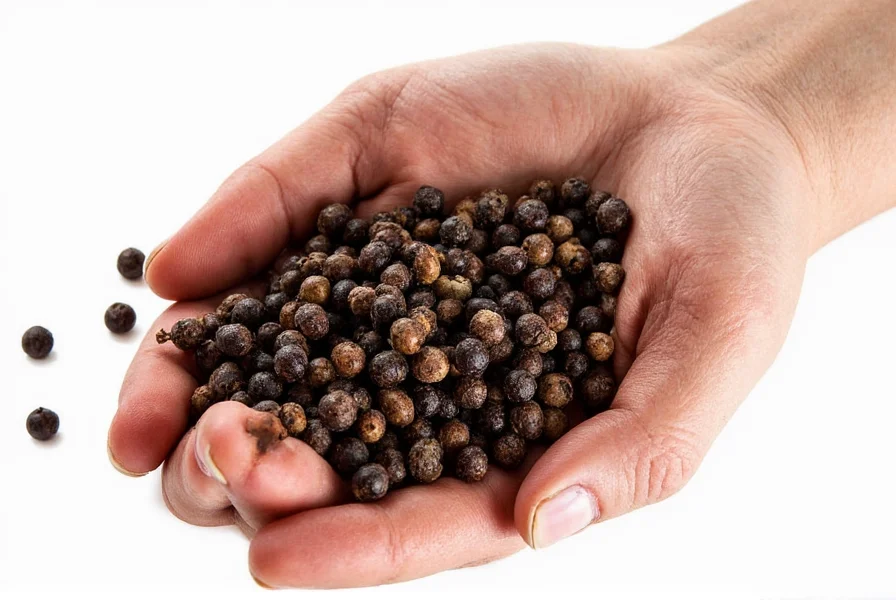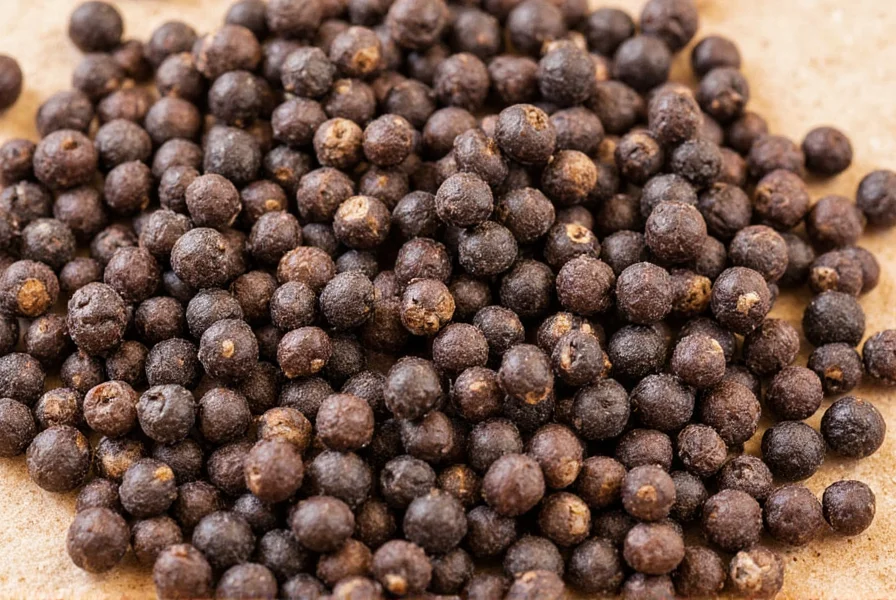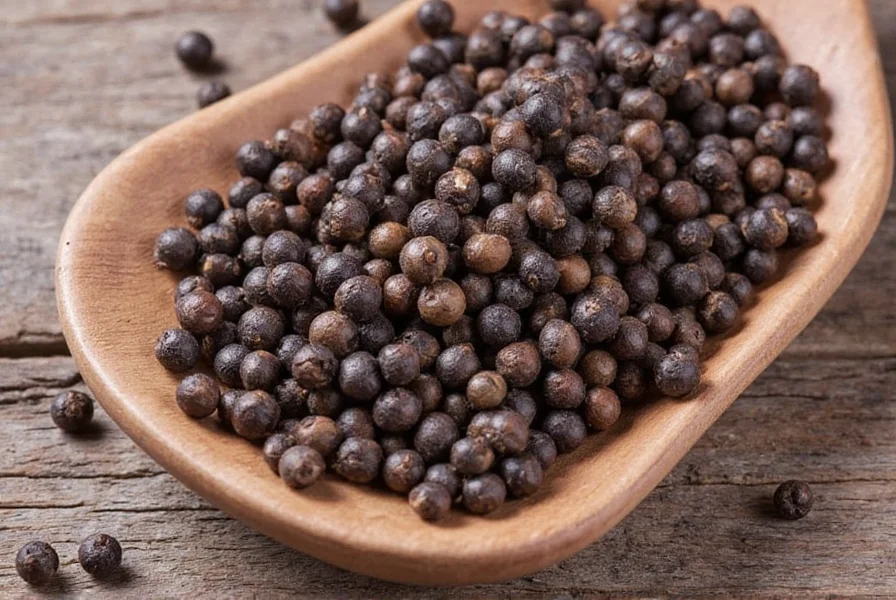Understanding the true nature of black pepper corns goes beyond simply recognizing them as a kitchen staple. These small berries represent one of the world's oldest and most traded spices, with a history spanning thousands of years and cultures across the globe.
The Botanical Background of Black Pepper Corns
Scientifically classified as Piper nigrum, black pepper is a flowering vine in the family Piperaceae. The "corns"—more accurately called peppercorns—are actually the fruit of this tropical plant. Each peppercorn contains a single seed surrounded by a thin, wrinkled outer layer that develops its characteristic dark color during processing.
Grown primarily in tropical regions with consistent rainfall and humidity, the most renowned black pepper comes from India's Malabar Coast, Vietnam, Indonesia, and Brazil. The vines climb supports up to 15 feet high and begin producing fruit after 3-4 years of growth, with peak production occurring between years 7-12.
From Vine to Spice: The Processing Journey
The transformation from green berry to black peppercorn involves a precise process that significantly impacts flavor development:
- Harvesting: Berries are picked while still green but nearly ripe
- Processing: Berries are spread in thin layers and sun-dried for 3-7 days
- Chemical Change: During drying, enzymes cause the outer layer to ferment and turn black
- Final Product: The resulting wrinkled, dark brown to black peppercorns contain piperine—the compound responsible for pepper's heat
This natural fermentation process develops the complex flavor profile that distinguishes black pepper from other varieties. The longer the drying process, the darker and more intense the flavor becomes.
| Pepper Variety | Processing Method | Flavor Profile | Heat Level |
|---|---|---|---|
| Black Peppercorns | Unripe berries sun-dried | Robust, complex, earthy | Moderate to high |
| White Peppercorns | Ripe berries soaked to remove outer layer | Milder, earthier, less complex | Moderate |
| Green Peppercorns | Unripe berries preserved | Fresh, herbal, slightly fruity | Low to moderate |
| Red Peppercorns | Ripe berries preserved | Sweet, fruity, floral | Low |

Culinary Applications of Whole Black Pepper Corns
Professional chefs and home cooks increasingly recognize the superiority of freshly ground black pepper corns over pre-ground alternatives. The essential oils that provide pepper's complex flavor begin deteriorating immediately after grinding, which is why grinding your own makes such a dramatic difference in dishes.
When incorporating whole black pepper corns directly into cooking:
- Use in pickling brines for a subtle heat and complexity
- Add to stocks and broths for foundational flavor (remove before serving)
- Crush lightly for steak crusts or bread toppings
- Infuse into oils or vinegars for salad dressings
- Include in spice blends like quatre épices or garam masala
The size of your grind significantly impacts how pepper expresses itself in dishes. A coarse grind works best for meat rubs and hearty stews, while a fine grind suits delicate sauces and light-colored dishes where visible specks would be undesirable.
Nutritional Profile and Potential Health Benefits
Black pepper corns contain several beneficial compounds beyond just piperine. A single tablespoon (6g) of whole black pepper provides:
- Approximately 16 calories
- 0.6g protein
- 0.2g fat
- 3.3g carbohydrates
- 0.8g fiber
- Significant amounts of manganese, iron, and potassium
Research suggests several potential health benefits associated with black pepper corns:
- Enhanced nutrient absorption: Piperine may increase the bioavailability of certain nutrients and medications by up to 2000%
- Antioxidant properties: Contains compounds that may help combat oxidative stress
- Digestive support: Traditionally used to stimulate digestive enzymes
- Anti-inflammatory effects: Some studies indicate potential anti-inflammatory properties
It's important to note that while these potential benefits are promising, most research has been conducted in laboratory settings or with concentrated piperine extracts rather than culinary amounts of black pepper.

Proper Selection and Storage Techniques
When purchasing black pepper corns, look for these quality indicators:
- Uniform dark color (avoid batches with many light-colored peppercorns)
- Distinctive aroma when crushed between fingers
- Heavy weight for their size (indicates density and oil content)
- Minimal dust or debris in the container
For optimal freshness and flavor retention:
- Store in an airtight container away from light and heat
- Keep whole peppercorns rather than pre-ground whenever possible
- Avoid storing near strong-smelling foods (pepper readily absorbs odors)
- Use within 1-2 years for best flavor (though they remain safe indefinitely)
The moment you grind black pepper corns, oxidation begins to degrade the volatile oils responsible for their complex flavor. For this reason, investing in a quality pepper mill that uses a ceramic or carbon steel grinding mechanism will significantly enhance your culinary experience.
Common Misconceptions About Black Pepper Corns
Several myths persist about black pepper that deserve clarification:
- "All black pepper is the same": Different growing regions produce distinct flavor profiles—from the floral notes of Tellicherry pepper to the sharper heat of Lampong pepper
- "Older pepper is stronger": Pepper actually loses potency over time; fresher peppercorns have more vibrant flavor
- "Pepper causes stomach ulcers": Current research suggests moderate pepper consumption doesn't cause ulcers and may even have protective effects
- "More expensive means better": While premium varieties exist, value depends on your specific culinary needs rather than price alone
Practical Applications in Modern Cuisine
Contemporary chefs are rediscovering the versatility of whole black pepper corns beyond simple seasoning. Innovative applications include:
- Creating pepper-infused syrups for cocktails
- Developing pepper oil for finishing dishes
- Using in dessert applications (chocolate, fruit compotes)
- Pairing with seafood for unexpected flavor dimensions
- Creating compound butters with freshly cracked pepper
When experimenting with black pepper corns in new applications, remember that the flavor compounds are oil-soluble. This means they extract better into fats and alcohols than into water-based solutions, which should inform your technique when creating infusions or extracts.
Conclusion: Maximizing Your Black Pepper Experience
Understanding black pepper corns as a living ingredient rather than a static pantry staple transforms how you use this ancient spice. By selecting quality peppercorns, storing them properly, and grinding them fresh for each use, you unlock layers of flavor that pre-ground pepper simply cannot provide.
Whether you're a professional chef or home cook, treating black pepper corns with the respect they deserve—acknowledging their complex botanical nature and processing journey—will elevate your culinary creations in ways you might not have previously imagined possible.
What's the difference between black pepper corns and peppercorns?
Black pepper corns are specifically the dried, unripe fruit of the Piper nigrum plant. The term "peppercorns" is a broader category that includes black, white, green, and red varieties, all derived from the same plant but processed differently. Black pepper corns refer exclusively to the sun-dried version that develops the characteristic dark color and complex flavor.
How long do whole black pepper corns stay fresh?
Properly stored in an airtight container away from light and heat, whole black pepper corns maintain optimal flavor for 1-2 years. While they remain safe to consume indefinitely, the essential oils that provide their distinctive aroma and complex flavor begin degrading after grinding, which is why freshly ground pepper always tastes superior to pre-ground versions.
Can I substitute whole black pepper corns for ground pepper in recipes?
Yes, but with important considerations. As a general rule, 1 teaspoon of whole black pepper corns equals approximately ¾ teaspoon of freshly ground pepper. For recipes calling for ground pepper, you can grind the corns yourself to the desired consistency. In recipes specifically calling for whole corns (like pickling or stocks), substituting ground pepper would create an unpleasant texture and overly intense heat.
Why does freshly ground black pepper taste different from pre-ground?
The essential oils and volatile compounds responsible for black pepper's complex flavor profile begin oxidizing and evaporating immediately after grinding. Pre-ground pepper loses up to 90% of its aromatic compounds within 15 minutes of grinding. Whole peppercorns retain these compounds until you're ready to use them, which is why freshly ground pepper has noticeably brighter, more complex flavors with floral and citrus notes that pre-ground versions lack.
Are there any health concerns with consuming black pepper corns?
Black pepper is generally safe when consumed in culinary amounts. However, extremely large quantities may cause gastrointestinal irritation in sensitive individuals. People taking certain medications (particularly blood thinners or antidepressants) should consult their healthcare provider, as piperine may affect how the body processes some pharmaceuticals. Those with known pepper allergies should obviously avoid consumption.
Frequently Asked Questions
What's the difference between black pepper corns and peppercorns?
Black pepper corns are specifically the dried, unripe fruit of the Piper nigrum plant. The term "peppercorns" is a broader category that includes black, white, green, and red varieties, all derived from the same plant but processed differently. Black pepper corns refer exclusively to the sun-dried version that develops the characteristic dark color and complex flavor.
How long do whole black pepper corns stay fresh?
Properly stored in an airtight container away from light and heat, whole black pepper corns maintain optimal flavor for 1-2 years. While they remain safe to consume indefinitely, the essential oils that provide their distinctive aroma and complex flavor begin degrading after grinding, which is why freshly ground pepper always tastes superior to pre-ground versions.
Can I substitute whole black pepper corns for ground pepper in recipes?
Yes, but with important considerations. As a general rule, 1 teaspoon of whole black pepper corns equals approximately ¾ teaspoon of freshly ground pepper. For recipes calling for ground pepper, you can grind the corns yourself to the desired consistency. In recipes specifically calling for whole corns (like pickling or stocks), substituting ground pepper would create an unpleasant texture and overly intense heat.
Why does freshly ground black pepper taste different from pre-ground?
The essential oils and volatile compounds responsible for black pepper's complex flavor profile begin oxidizing and evaporating immediately after grinding. Pre-ground pepper loses up to 90% of its aromatic compounds within 15 minutes of grinding. Whole peppercorns retain these compounds until you're ready to use them, which is why freshly ground pepper has noticeably brighter, more complex flavors with floral and citrus notes that pre-ground versions lack.
Are there any health concerns with consuming black pepper corns?
Black pepper is generally safe when consumed in culinary amounts. However, extremely large quantities may cause gastrointestinal irritation in sensitive individuals. People taking certain medications (particularly blood thinners or antidepressants) should consult their healthcare provider, as piperine may affect how the body processes some pharmaceuticals. Those with known pepper allergies should obviously avoid consumption.











 浙公网安备
33010002000092号
浙公网安备
33010002000092号 浙B2-20120091-4
浙B2-20120091-4